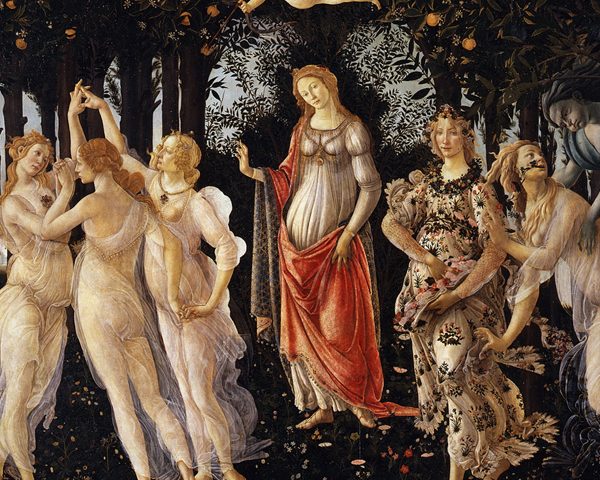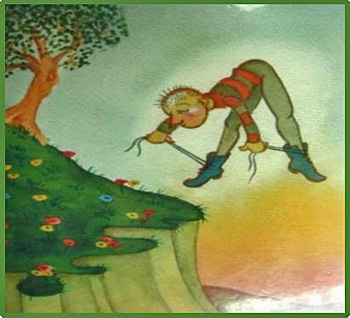Communication as the basis for understanding

Can the culture of YouTube inform our practice in Teacher Education?
June 11, 2018
Professionally developing teacher educators with regard to ICT
June 29, 2018Communication as the basis for understanding

Art and education
Art can be a beacon to education. Two big art revolutions, the Renaissance and Impressionism, can show us a vision that should influence teaching and learning. The revolution of the Renaissance era, as Botticelli's picture Primavera (spring) of the end of the 15th century shows, allowed to depict the beauty of the world and of human beings. The free spirit of the Greek and Roman cultures of exploring the world returned to the discourse of the day.
The Impressionists related to the unique representation of the world by the onlooker. Each observer sees the world differently. In every hour of the day, the world looks different. Van Gogh enabled us to see the world through the lens of the artist’s feelings.
Engaging students with the beauty of the world should be the main goals of education today. One can enable students to experience journeys in their minds to beautiful and inspiring environments, connected to the learnt topics. As each student perceives the learnt topics differently, the accumulation of the perceptions of every group of students expresses their mental power and imagination. However, the main issue is the effect of teaching on students’ learning. This can be achieved through dialogue.
The art of teaching
There is a need to connect two worlds: The world of knowledge with the world of each student. In a similar fashion to art, there is a growing recognition of the importance of learners’ perspectives in education. Relating to it means trying to establish meaningful communication. When learning touches students and affects their understanding and emotions, they create a new realm in their minds connected in a way to the learnt subject or phenomenon or text.
 The goal of teaching in the classroom is to enable students change their understanding of the learnt subject. There is a gap between teaching and learning. What a teacher can formulate in a few sentences, may take a long time to learn and a lot of effort by the students.
The goal of teaching in the classroom is to enable students change their understanding of the learnt subject. There is a gap between teaching and learning. What a teacher can formulate in a few sentences, may take a long time to learn and a lot of effort by the students.
Therefore, teachers should be attentive to students’ real process of conceptualizations of the subjects they teach and to connecting it to interesting contexts. Teachers should look for a variety of ways, to enable students grasp the learnt subject. The mediation of the teacher exposes students to the beauty of the world or a text and enables them to broaden their perspectives of the learnt concept and connect it to their worlds.
Teaching for understanding requires teachers to conduct a meaningful dialogue with the students. Attentive teaching gives simple tools to teachers to identify students’ current conceptualizations and visual representations of the learnt subject and engage in a dialogue with them about it. Asking students to draw enables them to express their perceptions of environments that they see. As they explain their drawings and discuss them in the classroom’s forum, teachers can direct their mediation efforts at the classroom as well as specific students simultaneously, targeting their current conceptualizations and emotional reactions (uncertainty processes).
A Thinking Journey in the minds of students
Paul Bloom (2000) relates to three ingredients of understanding: Definition and description, visual representation and relation to specific contexts. How can students experience the three ingredients of understanding in a way that can make their learning exciting? Students can relate to all three of them when the teaching and learning involve ‘thinking journeys’ to unknown environments or unexpected contexts (Schur, 2015). To understand, learners must free themselves from their habitual perspective in favor of a new, creative one. Carey (2009) calls this disconnection “bootstrapping” and put the following picture on the cover of her famous book “The Origin of Concepts”.
Understanding and communication
Definition and description. Comparing different representations of the learnt concept is conducive to learning. Understanding is grasping the invariant features of diverse representations of the same concept. For example, understanding of the day-night cycle can be achieved by comparing the Earth with the moon: In both celestial objects, day is defined as the illumination of the ground by the sun.
Visual representations. Another important aspect of understanding is experiencing a variety of representations of the concept in diverse environments. The day on the moon looks very different from that on Earth. Each experience of a different representation enriches the students’ understanding. Students should use their imagination when going through visits to unknown and unexpected contexts.
The use of contexts. As it takes a long time to understand concepts at the theoretical level, students need to go through a variety of mediated interactions, each providing a different perspective on the learnt subject. There is no need for a sophisticated laboratory to embark on a thinking journey. All it takes is a picture, a text, or any kind of artifact to present a specific context of the learnt subject to students. Each context will change students’ understanding of that subject.
Attentive Teaching
Attentive teaching in regular classes can achieve impressive results, as students are able to understand complex subjects (Schur & Galili, 2009; Schur, Galili & Shapiro, 2009). Attentive teaching enables teachers to listen to their students, even in crowded classes. Students feel they are being heard. Consequently, their learning processes and self-esteem improve. This method was tried in a variety of disciplines and age groups, from preschools to upper secondary schools and in special education classes. Currently, there are efforts to establish "attentive schools" and "attentive kindergartens".
We call on other teacher educators to join us and form a learning community focusing upon attentive teaching, enabling students feel that teachers really communicate with them and help them understand the subjects they learn.
For further information, please contact me through my mail: schrfa@netvision.net
References
Bloom, P. (2000). How children learn the meaning of words. Cambridge, MA: The MIT Press.
Carey, S. (2009). The origin of concepts. Oxford: Oxford University Press.
Schur, Y. (2015). Thinking journeys in the classroom: The power of uncertainty and mediation. Professional Development Today - PDT, 18(1), 44-53.
Schur, Y., & Galili, I. (2009). Thinking journey: A new mode of teaching science. International Journal of Science and Mathematics Education, 7, 627-646.
Schur, Y., Galili, I., & Shapiro, T. (2009). Multiple perspectives of science learners using thinking journey for understanding the day-night concept. Journal of Science Education, 10(2), 94-98.






